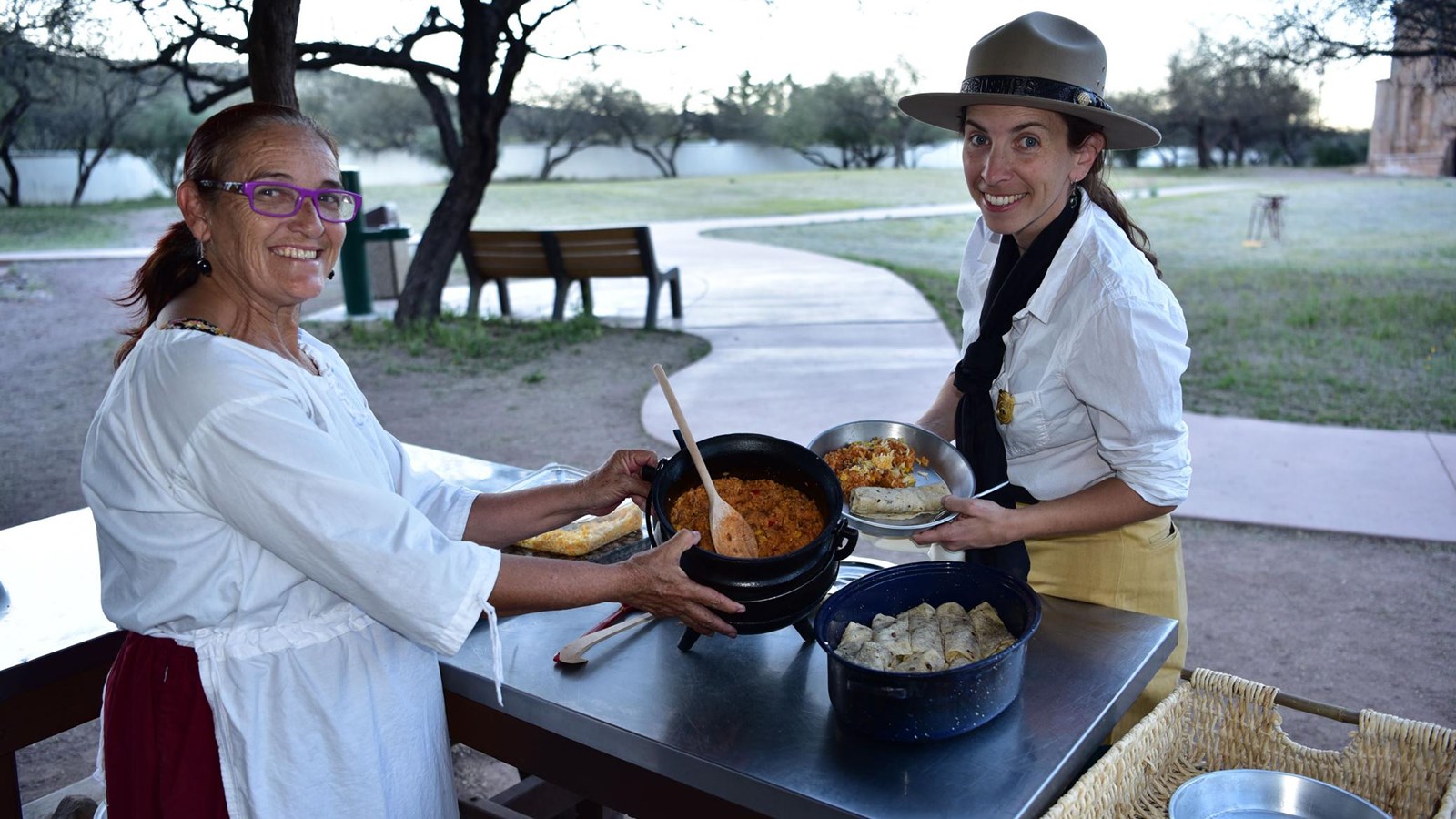Last updated: March 5, 2021
Place
Tumacácori - Cooking Ramada

Patrick Christman
Benches/Seating, Historical/Interpretive Information/Exhibits, Recycling, Trash/Litter Receptacles, Water - Bottle-Filling Station, Water - Drinking/Potable, Water - Non-Potable
Once it gained its independence from Spain, the new nation of Mexico no longer valued the missions for their original purpose of converting native people into European-style citizens. Priests born in Spain were deported, including Tumacácori’s last resident priest in 1828. The mission families stayed on for another twenty years. For reasons that they did not record, in 1848 the residents of Tumacácori moved away, the women carrying their precious santos (saint statues) on their backs in burden baskets to San Xavier del Bac. They left behind their church, cemetery, fields, and homes.
With the Gadsden Purchase in 1854, Tumacácori became part of the United States. The U.S. reservation system eventually limited the legal territory of the O’odham to five sister reservations: the San Xavier and Tohono (desert) O’odham, and Gila River, Salt River, and Ak-Chin Pima (river) nations.
Today, the Tohono O’odham and Pima are known for their beautiful basketry, woven using materials collected from the deserts and rivers of their homeland. The Yoeme (Yaqui) are famous for their carvings and religious dance, the Apache for their beadwork. Many still speak the languages of their ancestors.
After hundreds of years of mixing, marrying, creating new families, and blending traditions, a new people emerged: the mestizaje of Mexico. Flavors like chiles, carne asada, and tortillas reflect this mixing of origins. Sharing traditional foods—made fresh in kitchens such as this one—connects us to each other and to our shared heritage.
- Duration:
- 5 minutes, 10 seconds
The humble flour tortilla is actually a unique invention, brought about by sharing and innovation in missions and other communities of New Spain. It became embedded in Hispanic culture and its traditions continue today. Ranger Georgina Jacquez demonstrates how to create an authentic flour tortilla.
